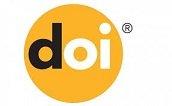Engineering Identity Development: A Review of the Higher Education Literature
Abstract
The purpose of this systematic literature review was to appraise and synthesize the current scholarship pertaining to engineering identity development within the higher education context and create recommendations for future scholarship within engineering education. A review of the literature concluded that research on engineering identity development has increased over the past ten years, has been conducted primarily with qualitative methods, and has been primarily limited to academic communities focused on mathematics, science, and engineering education. In addition, current scholarship reflected that most of the work in this area has focused on the learning contexts and experiences of women and underrepresented racial/ethnic minorities with less focus on men, international, or graduate students. Future scholarship in this area should focus on expanding forms of engineering identity frameworks and focus to facilitate greater understanding of engineering identity development.
Full Text:
PDFReferences
Rodriguez, S.L., Lu, C., & Bartlett, M. (2018). Engineering identity development: A review of the higher education literature. International Journal of Education in Mathematics, Science and Technology (IJEMST), 6(3), 254-265. DOI: 10.18404/ijemst.428182
Refbacks
- There are currently no refbacks.
Copyright (c) 2018 International Journal of Education in Mathematics, Science and Technology








This work is licensed under a Creative Commons Attribution-NonCommercial-ShareAlike 4.0 International License.
ISSN: 2147-611X (Online)
